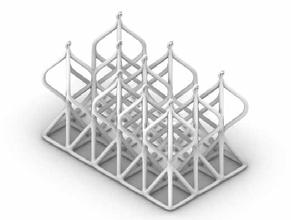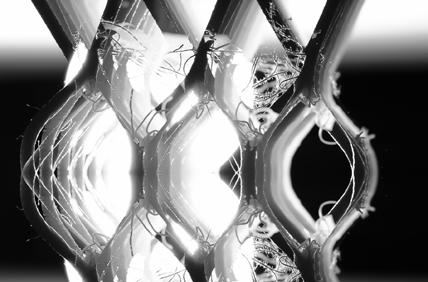
1 minute read
Cell Layers in the Skin
from Portfolio 2022-2023
by Maya Schiltz
Human skin contains multiple layers of different types of cells to form the protective outer layer of out bodies. This modular design takes inspiration from the geometry within the layers as they shift from very stiff, brick-and-mortar geometry to a more randomized and flowing geometry to finally completely random form. The topmost layer, containing corneocytes, or the dead skin cells, overlap in a firm, fairly set pattern, to form a protective layer. This geometry inspired me to create a very geometric and strong structural module as the first layer. The next cell are the keratinocytes, which are much more fluid and open in their geometry, leading to a more open, curvy shape for the second module, with more gaps allowed in the overall configuration. The third module comes from the elastic mucus of the dermis, completely random and stringy in form, and is represented in the strings attached to the tips of the second module, completely loose and fluid in form.

Advertisement




